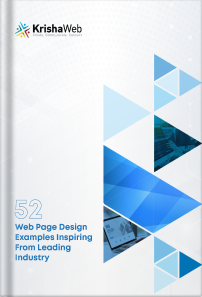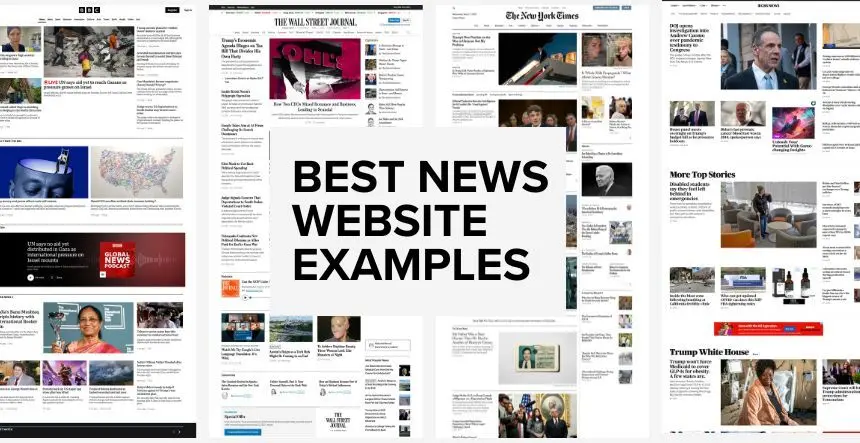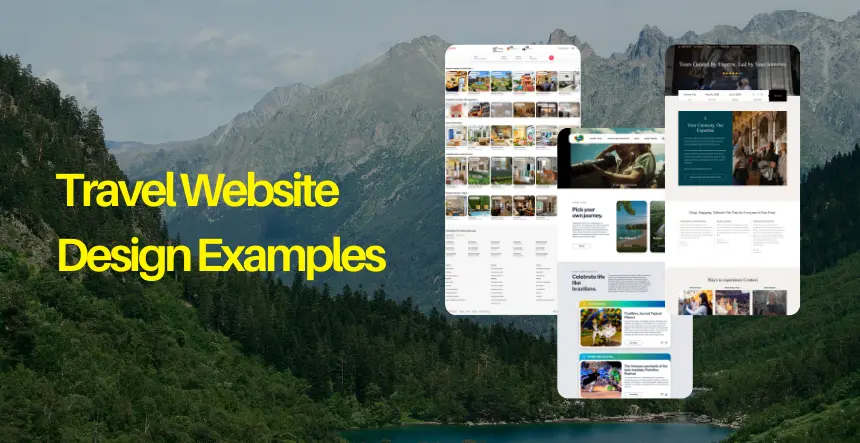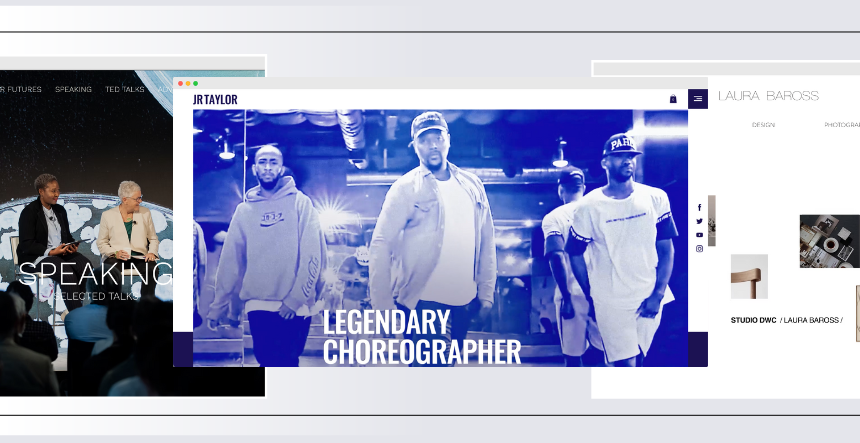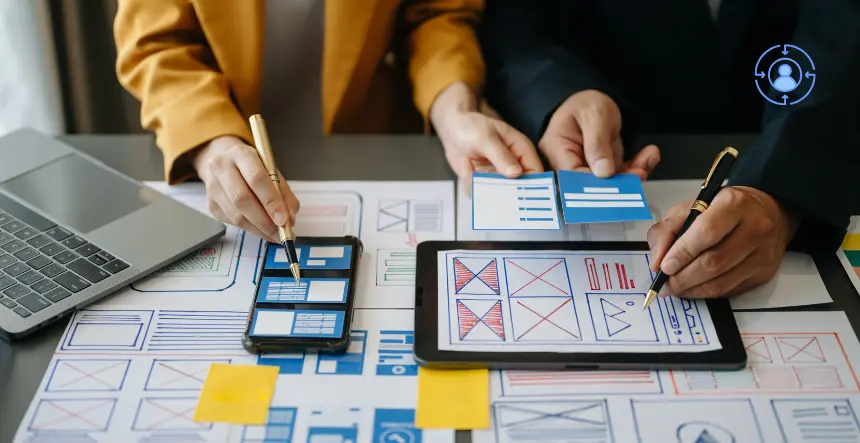
Ecommerce Website Design Guide
Online businesses need a software application, known as an eCommerce platform, to manage the features, operations, sales and marketing of the eCommerce website. You have to select the right type of platform before building an eCommerce website for your business.
Below are the selection criteria of a suitable platform for an Ecommerce Store…
- Open Source Platforms: The eCommerce platform enables you to control the eCommerce environment and modify every aspect of the code. You will be responsible for;
- PCI Compliance
- Manual patch and updating of releases from the platform provider
- Hosting
- Resolution of the security issues
- QA for various additional applications: However, the maintenance of an open-source platform is expensive and you need to have extensive technical knowledge to handle this platform.
- SaaS: This is the right type of eCommerce platform if you want to design a store within a few hours. SaaS comes with a drag-and-drop visual editor. However, there is limited opportunity for customization when using this platform and you cannot add custom features.
On the other hand, a SaaS provider will perform all the tasks necessary to manage your software, such as product updates, security, hosting, compliance, PCI compliance etc. - Headless Commerce: This is a version of CaaS eCommerce. You may use a DXP (design experience platform), such as Bloomreach, Adobe Experience Manager, or CMS (Drupal or WordPress) when using this platform and an eCommerce shopping cart solution is plugged in from the CMS. It is also possible to use SaaS technologies instead of decoupled carts.
Okay, so let’s come to the main point…
What do You Understand by “Ecommerce Website Design”?
The trend of online trading was initiated by NetMarket in 1994 and this website is still in operation. With the increasing demand for online trading over the past decades, there are approximately 12-24 million active eCommerce websites. Therefore, the competition is fierce. The demand for online trading has increased significantly over the past two years due to the pandemic.
Therefore, it is essential to pay attention to the design of an eCommerce store if you want to move ahead of the competitors. This is the process of developing user-friendly online stores for businesses where they can sell products or services to the target customers. Designing an eCommerce website is not easy. You have to ensure that the content and the products are properly arranged and displayed on the website and can be easily found by the visitors.
Using high-quality eCommerce website designing, you can ensure –
- positive user experience for the shoppers
- that consumers can quickly find the products or services
- quick and efficient checkout and payment process
On the other hand, you will lose target customers to competitors due to the substandard design of the eCommerce site. Therefore, it is important to let web experts design your website.
What is Required to Build a Stunning and High Performing Ecommerce Website?
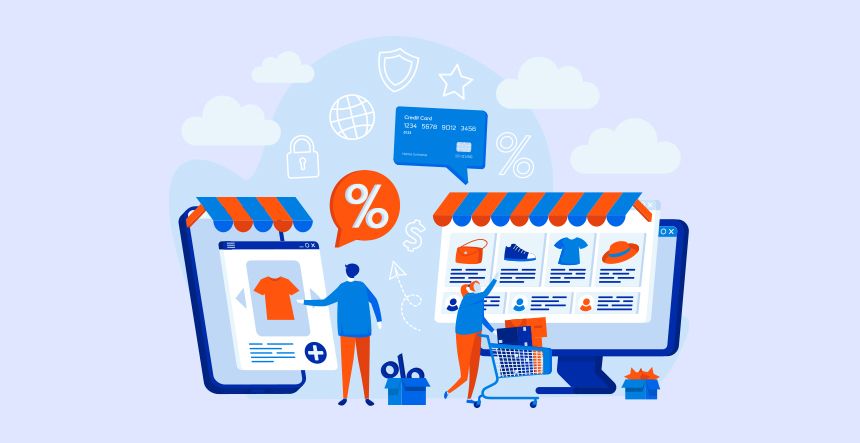
If you want to build a unique eCommerce website that represents your business to the target customers and guarantees user satisfaction, then your online store has to include the following features.
1) Mobile Responsive
You will be losing a large number of customers to your competitors if your eCommerce platform is not mobile responsive since 46% of the consumers use Smartphones for shopping. They use Smartphones to complete the entire purchase process and will walk out of an eCommerce store that is not mobile responsive. Therefore, you will be missing a lot of sales.
If your eCommerce website is responsive, then visitors can easily navigate through the website, find the products of their choice and can easily perform all the tasks on all types of internet-enabled devices.
Over 50% of all website traffic comes from smartphones.
– @StatistaCharts
2) Customized Features
It is essential for every eCommerce website to have unique features in order to look different from the competitors’ websites. It is essential for eCommerce websites to have beautiful typography, pleasant iconography, convenient layout, crisp visuals and other design elements. You cannot create a unique identity for your eCommerce store if the eCommerce platform does not have features for customization and unique ready-to-use templates.
3) Comprehensible & User-Friendly Navigation
You will lose visitors if the navigation buttons are difficult to understand or use. They are UI elements that visitors use in order to visit a particular page on a website or to perform a particular task. The header navigation menu, filters, on-site search button, footer and product category pages are a few examples of navigation on a website. You cannot convert the visitors to your website into customers if you cannot create user-friendly and personalized navigation paths.
4) Excellent User Experience
If the visitors to your website are satisfied, they will become customers. The satisfied customers may turn into loyal customers and recommend the store to others. Thus, it is essential to ensure user satisfaction.
It is possible to develop products that deliver relevant and meaningful experiences to users with the help of UX design. It plays an important role in ensuring that a website is intuitive, user-friendly, reliable and navigable alongside being functional and featuring unique looks. Therefore, you will notice an increase in conversion rate, receive positive reviews about your eCommerce store, recommendations from your customers and an increase in sales.
You can determine if an eCommerce platform is user-friendly based upon the following tips.
- Browse the eCommerce site to find out
- If you like the navigation
- If the layouts are effective
- If the design elements are good to look t and intuitive
- Check for possibilities of customization: Your eCommerce store is user-friendly if you can easily change, include or remove various design elements based upon the changes in your business, priorities or latest market trends.
- Learn about the performance of your eCommerce site and find:
- The loading time of each webpage and overall loading speed of the website
- Sluggish pages
- Defective design elements
It is important to remember that a substandard CMS/CDN or hosting provider may cause the product videos to load slowly. This will result in a slow loading speed.
There are 5 common factors that drive people to buy something online.
1) Product Price Comparision Tool
2) Free Shipping
3) Sales/Discount
4) Product Availability
5) Product Specifications
– @ThinkwithGoogle
Differences Between B2B and B2C Ecommerce Website Designs
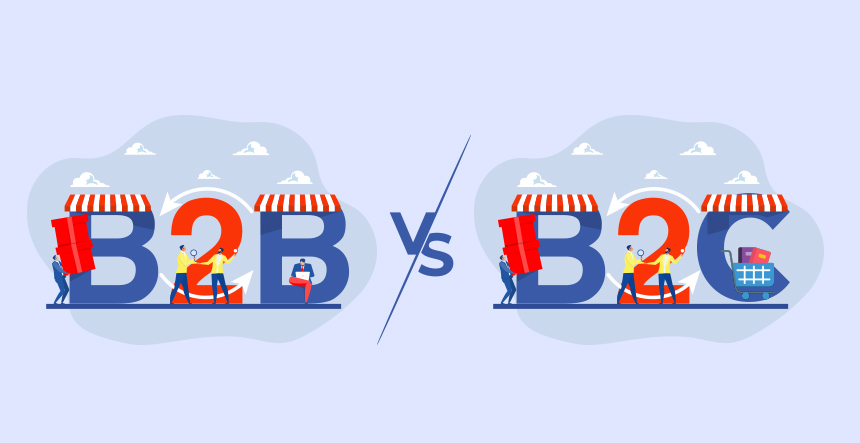
The target customers are different for B2B and B2C businesses.
- In B2C businesses, brand awareness is the priority
- In B2B businesses, lead generation is the priority
Therefore, the first rule of designing a high-performing eCommerce website is to understand the demands of the target customers and to identify the most effective way to reach them.
Important features to keep in mind when designing eCommerce websites for B2B or B2C businesses –
1) Customers’ Intent
The consumers of both B2B and B2C businesses are driven by their needs when planning to purchase a product or retain a service. However, their motivations are different behind these needs.
- B2B businesses have to satisfy a group of people (stakeholders, end-users, first-line customers) before making any investment. Therefore, it takes longer for these businesses to research a product and they have an extensive list of requirements. When designing an eCommerce website for B2B businesses, it is important to pay attention towards –
How to convert TOFU (top-of-the-funnel) or MOFU (middle-of-the-funnel) visitors into prospects and how to convert them into customers using a mix of online and offline sales strategies, such as- Online as well as in-person demos
- Social media and e-mail marketing
- eBooks
- Consultation over the phone
- The target customers of B2C businesses act differently. They purchase to satisfy their immediate needs and the sales cycle is shorter for the B2C businesses due to this reason. They do not spend a lot of time on data-based consideration and evaluation of the products, unlike B2B consumers.
Therefore, B2C consumers are receptive to different types of cognitive biases, such as- Category Heuristics: Brief descriptions of primary product specifications to simplify the purchase decisions
- Power of now: The proposition becomes weaker if customers have to wait longer for a product
- Social proof: Reviews and recommendations from others can be convincing
- Scarcity bias: The desirability of a product increases with less availability
- Authority bias: Being influenced by a reliable source or expert
- Power of free: Free gift with a purchase can be an effective motivator
2) User Experience
It is important for all types of eCommerce websites to be using UX Design. However, the eCommerce websites of B2B and B2C businesses have a few differences with respect to UX requirements.
- In the UX design of B2B websites, it is essential to use longer content to support the long sales process. All types of content have to be designed for decision-makers and end-users.
- The product information on B2B websites has to be detailed and comprehensive. It has to include a detailed overview of capabilities, integrations and regulatory needs.
- The pricing scenarios are more complicated for B2B businesses in comparison to B2C businesses. To improve the user experience, it is essential to provide the B2B buyers with varying pricing ranges, calculators, pay-per-usage scenarios etc. B2B buyers may use these facilities to make an informed decision before making an investment.
- Both B2B and B2C eCommerce sites have to be designed for different customer segments that differ in size and industry and may have different operational budgets. However, B2B websites have to be designed for more diverse and audience-based navigation.
3) Buying Process
For B2B Businesses,
The purchase process involves purchasing agents/decision-makers as well as end-users. Their eCommerce sites have to use interactive tools, different types of content and marketing assets to engage, inform and support the consumers. You have to use them to demonstrate how the products can satisfy the unique needs of an organization.
For B2C Businesses,
The purchase decisions are driven by emotions, events or immediate need. B2C customers will constantly explore the products. They are ready to accept lucrative offers immediately after finding it. It is essential for the eCommerce websites of B2C businesses to cater to this sense of urgency of the consumers and to speed up the discovery.
E-commerce Website Design Checklist
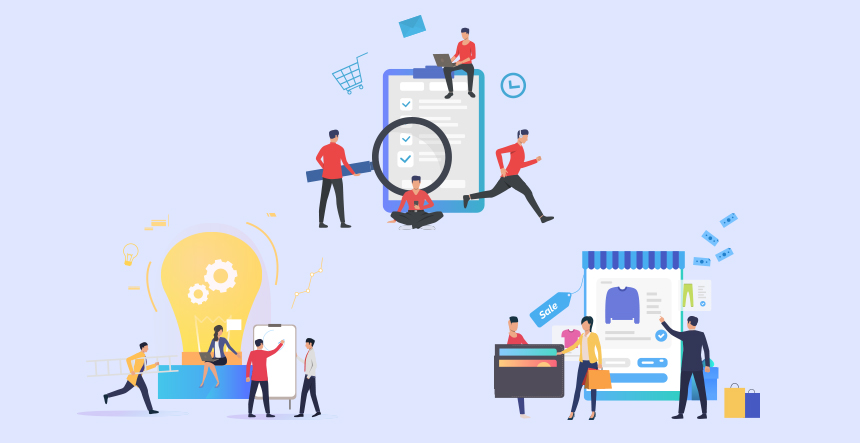
An e-commerce website has to include the following features. – Ecommerce Store Design Checklist
1) Homepage
The homepage works as the digital storefront for any business. You have as little as 3 seconds to make an impression when someone visits the store. Therefore, you have to be strategic when selecting the design elements for the homepage of your eCommerce website. It may include –
- Comprehensible product categories in the sidebar or header section
- Image-slider (slideshows) or hero-image (large banners) to feature the products or latest offers
- Carefully selected and organized presentation of the recommended or trending products and product categories
- Pop-up buttons with ‘enter’ and ‘exit’ messages or sticky bar at the top or bottom of the page
The look of your homepage will depend upon your industry as well as your customers’ preferences.
2) Category Page
Category pages play a vital role in improving the user experience and are essential for better SEO (search engine optimization). Therefore, it is essential for the category pages to have the following features.
- Descriptive and SEO-friendly URL
- Distinctive texts for category descriptions
- Filters to sort product suggestions
It is equally important to ensure that the category pages fit relevantly into a website’s overall information architecture.
3) Product Landing Pages
An eCommerce site’s traffic and conversion rate will never improve if the product pages do not include the following features.
- Multiple high-quality images of a product from different angles
- Product specifications, such as name, size, colour, prices and important features
- Purchase button and save for later button
- Detailed and comprehensible product description
- Customer reviews or social proof
- Related products for up-sell and cross-sells
4) Checkout Page
It is possible to lower the rate of website abandonment by improving the appearance and flow of the checkout page.
- Enable the ‘guest checkout’ option for the first-time shoppers: Ask them to register an account with your website after completing the purchase
- Decrease the number of necessary form fields in the checkout flow: Try to collect all data about your customers using 6-8 fields instead of using 11-12 fields.
- Enlist all payment methods accepted by your website
- Informing customers about a product’s possible costs before checkout.
- Inform visitors regarding the ‘free shipping’ threshold using a sticky banner
- Incorporate handling fees in product pricing
- Automatically add the relevant sales taxes before checkout
On average, it takes users 3 sessions to convert.
– @Contentsquare
5) About us
The ‘About Us’ page is as important as any other page on the eCommerce site for both B2B and B2C businesses. However, it is more important for the B2B businesses to properly design the ‘About Us’ page since this is the first page that is visited by the business buyers. You may follow these tips to build an attractive ‘About Us’ page for your eCommerce site.
- Write about your products in an engaging manner and include relevant images
- Discuss company history
- Inform visitors regarding your business values and future vision
- Introduce your team and include photos of team members
- Explain your operations
- Avoid using sales pitches or CTA texts
6) Search Results Page
You may follow these tips to create an excellent on-site search experience.
- Make sure that the search bar can be easily found
- Suggest auto-completes
- Generate results for misspelt words
- Customized search results based upon analytics
- Support text queries as well as image searches
7) Account Registration and Login Forms
If you want to lower the possibility of customer churn, then keep the log-in forms short and avoid including unnecessary steps.
- Enquire about the basic information at first, such as e-mail
- Give them the option to log in through one of their social accounts
- Require for billing and shipping details once the registration process is complete
- Provide users with the option to save and re-use their details in an address book
8) Email Subscription Form
You have to properly build an e-mail list in order to ensure a successful e-mail marketing campaign. To encourage subscription for your eCommerce site,
- Ensure that the newsletter has prominent placement on the homepage
- Keep a pop-up or sticky version of the newsletter in the footer
You may provide the first-time shoppers with a discount on product price to encourage subscription.
Ecommerce Website Design Costs
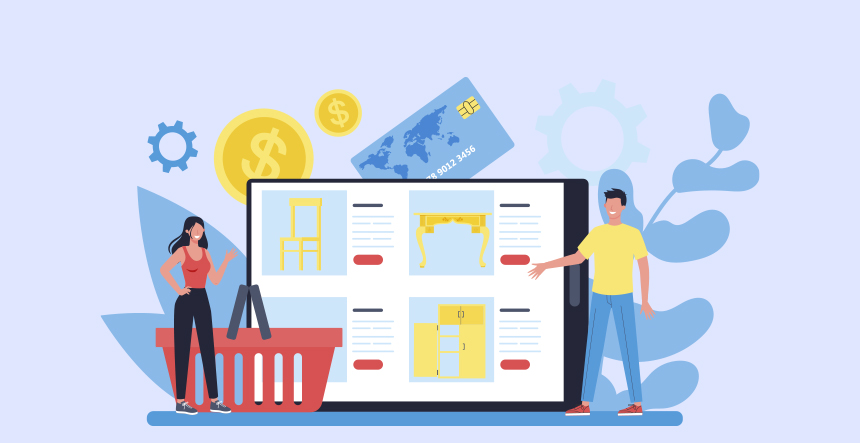
The eCommerce website design cost depends upon the number of products as well as its functionality. For example,
- The average cost of designing a website with 100-1000 products maybe $5000-$55,000. This includes the cost of designing and developing a website along with the additional upfront costs.
- The average cost of maintaining a website with 100 to 1000 products is $15,000-$30,000 per year.
You have to spend less in order to maintain eCommerce websites with less functionality and vice versa.
Breakdown to Ecommerce Website Design Costs
You will find the breakdown of eCommerce website costs from this table.
| ECOMMERCE COST FACTOR | AVERAGE PRICE |
|---|
| Number of pages | $1000-$2000 per 10 pages |
| Website Builder | $0-$300 |
| Web design Agency | $3000-$100,000 |
| Freelance Web Designer | $500-$5000 |
| Ecommerce Functionality | $2000-$25,000 |
| Responsive design | $3000-$25,000 |
| Database integration | $2000-$25,000 |
| Interactive multimedia | $250-$10,000 |
| Website Copy | $50-$500 per page |
| Content management system | $2000-$25,000 |
| Ecommerce SEO | $750-$5000 per month |
| Domain Name | $0.95-$12 per year |
| Website Maintenance | $15,000-$30,000 per year |
| Hosting | $75-$10,000 per year |
Examples of Great Ecommerce Website Design
1) B2B Website – ACME
Its main objective is to cater to the needs of the businesses. The minimalist design style of this website is appreciable. It guides the target customers through the services and sales funnel with no complicated steps and makes sure that the process is not tiresome for the busy customers to prevent abandonment.
2) B2C Websites – AMAZON
Amazon has become the largest B2C website in the world because it makes it easier and simpler for consumers to search, select and purchase the desired products. On the other hand, consumers can select the right item according to their requirements due to the high quality of the content.
3) C2C Websites – eBay
This online auction portal is popular around the world due to its streamlined and user-friendly website design.
4) C2B Websites – Fiverr
The superior design quality of Fiverr makes it easier for individuals to promote their expertise to various businesses. Therefore, Fiverr has become more popular than its competitors.
Conclusion
In a nutshell, the success of an eCommerce website’s design depends upon iteration.
- At first, design the prototypes of all essential pages.
- Test their quality with the team for alliterations
- Launch your website’s new look and collect feedback from the customers
You can concentrate on the creative part of the eCommerce website designing process if an ‘eCommerce platform’ provider helps you out with the functional requirements. There is plenty of scope for design variations when creating an online shopping portal for your business. If you are looking for an all-in-one eCommerce Solutions Partner feel free to get in touch with our eCommerce Experts at KrishaWeb. Or Just drop an email to us, we will have a problem-solving discussion with you…
Nisarg Pandya
Project ManagerExperienced Project Manager and Scrum Master at KrishaWeb, delivers expertise in Scrum methodologies, Laravel, React.js, UX design, and project management, ensuring efficient project delivery and agile implementation.








